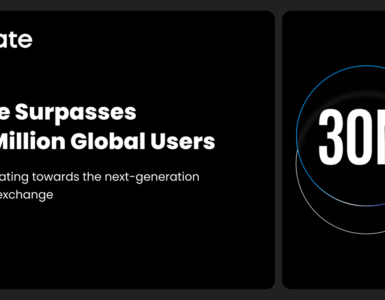Introduction
In recent years, the intersection of finance, technology, and sustainability has given rise to a new concept: green cryptocurrency. As the world increasingly focuses on achieving the United Nations’ Sustainable Development Goals (SDGs), it becomes crucial to explore how green cryptocurrency aligns with these goals and contributes to a better future. This article delves into the concept of green cryptocurrency, its alignment with the SDGs, the benefits it offers for sustainable development, and the challenges it faces.
Understanding Green Cryptocurrency
Green cryptocurrency, also known as eco-friendly or sustainable cryptocurrency, refers to digital currencies that prioritize environmental sustainability in their operations and underlying technologies. Unlike traditional cryptocurrencies like Bitcoin, which rely on energy-intensive mining processes, green cryptocurrencies employ innovative mechanisms to minimize their carbon footprint and environmental impact. These mechanisms include using proof-of-stake consensus algorithms, renewable energy sources for mining, and supporting sustainable projects through blockchain-based solutions.
The Importance of Sustainable Development Goals (SDGs)
The Sustainable Development Goals (SDGs), adopted by the United Nations in 2015, provide a framework for addressing global challenges and achieving a sustainable future. The 17 goals encompass a wide range of objectives, including poverty eradication, zero hunger, quality education, clean energy, climate action, and more. To accomplish these goals, it is essential to harness innovative solutions and technologies that promote sustainability across various sectors.
Aligning Green Cryptocurrency with SDGs

Green cryptocurrency can play a significant role in advancing the SDGs. By aligning their operations and objectives with specific goals, green cryptocurrencies can contribute to sustainable development in the following ways:
1. SDG 1: No Poverty
Green cryptocurrency initiatives can help alleviate poverty by promoting financial inclusion and providing access to decentralized financial services. Through blockchain technology, individuals in underserved regions can have secure and affordable access to banking, loans, and other financial tools, enabling them to participate in the global economy.
2. SDG 2: Zero Hunger
Green cryptocurrencies can support initiatives that address food security and promote sustainable agricultural practices. By facilitating transparent supply chains and incentivizing sustainable farming, these cryptocurrencies can contribute to reducing food waste, ensuring fair prices for farmers, and promoting equitable distribution of resources.
3. SDG 3: Good Health and Well-being
Green cryptocurrency projects can encourage investments in healthcare infrastructure, medical research, and disease prevention. Through transparent and secure transactions, these initiatives can enhance the efficiency and effectiveness of healthcare systems, ultimately improving access to quality healthcare services worldwide.
4. SDG 4: Quality Education
Green cryptocurrencies can facilitate access to education by supporting initiatives that provide affordable and inclusive learning opportunities. Blockchain-based platforms can enable secure record-keeping, verification of qualifications, and direct peer-to-peer learning, eliminating barriers and ensuring equal access to education for all.
5. SDG 5: Gender Equality
Green cryptocurrency initiatives can empower women by promoting financial inclusion, entrepreneurship, and economic opportunities. By providing secure and accessible financial services, these initiatives can help bridge the gender gap in financial inclusion and support women-led sustainable projects.
6. SDG 6: Clean Water and Sanitation
Green cryptocurrencies can contribute to achieving clean water and sanitation goals by funding projects that improve water management, purification systems, and infrastructure. Through transparent and accountable funding mechanisms, these initiatives can ensure efficient utilization of resources and promote sustainable water practices.
7. SDG 7: Affordable and Clean Energy
Green cryptocurrency projects can accelerate the transition to clean and renewable energy sources by funding renewable energy infrastructure, research, and development. By promoting sustainable energy solutions, these initiatives can contribute to mitigating climate change and ensuring affordable access to clean energy for all.
8. SDG 8: Decent Work and Economic Growth
Green cryptocurrencies can foster economic growth by supporting sustainable businesses, promoting fair trade, and creating job opportunities. Through transparent and traceable supply chains, these initiatives can incentivize ethical practices and contribute to the creation of inclusive and sustainable economies.
9. SDG 9: Industry, Innovation, and Infrastructure
Green cryptocurrency projects can drive innovation in sustainable technologies and infrastructure. By funding research and development in areas such as renewable energy, smart cities, and efficient transportation, these initiatives can contribute to the advancement of sustainable industries and resilient infrastructure.
10. SDG 10: Reduced Inequalities
Green cryptocurrencies can help reduce inequalities by promoting financial inclusion, supporting marginalized communities, and addressing wealth disparities. By providing accessible financial services and supporting projects that uplift marginalized groups, these initiatives can contribute to creating a more equitable and inclusive society.
11. SDG 11: Sustainable Cities and Communities
Green cryptocurrency initiatives can support the development of sustainable cities and communities by funding projects focused on urban planning, efficient transportation, and renewable infrastructure. Through blockchain-based governance and funding mechanisms, these initiatives can promote citizen participation and sustainable urban development.
12. SDG 12: Responsible Consumption and Production
Green cryptocurrencies can encourage responsible consumption and production patterns by supporting initiatives that promote circular economies, waste reduction, and sustainable resource management. By incentivizing eco-friendly practices and transparent supply chains, these initiatives can contribute to reducing the environmental impact of consumption.
13. SDG 13: Climate Action
Green cryptocurrency projects are inherently aligned with SDG 13 as they aim to mitigate the environmental impact of traditional cryptocurrencies. By utilizing renewable energy sources for mining and supporting climate-focused projects, these initiatives can contribute to global efforts to combat climate change.
14. SDG 14: Life Below Water
Green cryptocurrency initiatives can fund projects that protect and restore marine ecosystems, support sustainable fishing practices, and reduce pollution in oceans and seas. By promoting transparency in seafood supply chains and supporting ocean conservation efforts, these initiatives can contribute to preserving life below water.
15. SDG 15: Life on Land
Green cryptocurrencies can support initiatives that preserve biodiversity, restore ecosystems, and promote sustainable land use practices. By funding reforestation projects, sustainable agriculture, and wildlife conservation efforts, these initiatives can contribute to preserving life on land and protecting ecosystems.
Benefits of Green Cryptocurrency for Sustainable Development
The adoption of green cryptocurrencies offers several benefits for sustainable development:
- Environmental Sustainability: Green cryptocurrencies reduce carbon emissions associated with traditional mining processes, promoting a more sustainable and eco-friendly approach to digital currencies.
- Financial Inclusion: By providing access to decentralized financial services, green cryptocurrencies empower individuals in underserved regions, promoting financial inclusion and economic opportunities.
- Transparent and Accountable Transactions: Blockchain technology ensures transparency, traceability, and accountability in financial transactions, fostering trust and combating corruption.
- Innovative Funding Mechanisms: Green cryptocurrencies facilitate direct funding for sustainable projects, enabling individuals and organizations to contribute to initiatives aligned with the SDGs.
- Global Collaboration: Green cryptocurrencies encourage international cooperation and collaboration by connecting individuals and organizations worldwide, facilitating knowledge sharing and collective action for sustainable development.
Challenges and Potential Solutions
While green cryptocurrencies hold promise for sustainable development, they also face challenges:
- Energy Consumption: Some green cryptocurrencies still require energy-intensive processes, although they are generally more efficient than traditional cryptocurrencies. Continued innovation in energy-efficient mining and consensus algorithms can mitigate this challenge.
- Regulatory Frameworks: The evolving nature of cryptocurrencies necessitates the development of robust regulatory frameworks to ensure investor protection, prevent illicit activities, and foster responsible use of green cryptocurrencies.
- Public Perception: Overcoming skepticism and building trust among individuals and institutions regarding the viability and long-term impact of green cryptocurrencies is crucial. Transparent reporting and accountability can help address these concerns.
- Integration with Existing Systems: Integrating green cryptocurrencies into existing financial and economic systems requires collaboration between blockchain developers, financial institutions, and governments to ensure seamless interoperability and adoption.
The Role of Governments and Regulatory Frameworks
Explore the role of governments in promoting and regulating green cryptocurrencies. Discuss the importance of developing regulatory frameworks that balance innovation and investor protection, and how governments can create an enabling environment for the growth of green cryptocurrency initiatives.
Case Studies: Successful Green Cryptocurrency Projects
Highlight real-life examples of successful green cryptocurrency projects and their impact on sustainable development. Discuss their unique approaches, partnerships, and the positive outcomes they have achieved in advancing specific SDGs.
The Potential of Blockchain Technology in Advancing the SDGs
Examine how blockchain technology, the underlying technology of green cryptocurrencies, can be leveraged to address various SDGs beyond the financial sector. Discuss the potential applications of blockchain in areas such as supply chain transparency, renewable energy management, land rights, and more.
Investor Perspectives on Green Cryptocurrency
Provide insights into the perspectives of investors in green cryptocurrency projects. Discuss the motivations behind investing in sustainable projects, the potential for financial returns, and the impact of their investments on advancing the SDGs.
Partnerships and Collaboration for Sustainable Development
Explore the importance of partnerships and collaboration between green cryptocurrency projects, governments, NGOs, and other stakeholders. Discuss how these collaborations can leverage collective resources, expertise, and networks to achieve sustainable development goals more effectively.
Overcoming Barriers to Adoption and Mainstreaming
Identify the barriers hindering the widespread adoption and mainstreaming of green cryptocurrencies. Discuss challenges such as technological barriers, lack of awareness, regulatory uncertainties, and potential solutions to overcome these obstacles.
The Future of Green Cryptocurrency
Offer insights into the future prospects of green cryptocurrency and its potential to shape a sustainable future. Discuss emerging trends, technological advancements, and the evolving role of green cryptocurrency in driving sustainable development globally.
Conclusion
Green cryptocurrency represents a promising avenue for aligning digital finance with sustainable development goals. By prioritizing environmental sustainability, financial inclusion, and transparent funding mechanisms, these initiatives can contribute to a better future. However, addressing challenges related to energy consumption, regulations, public perception, and integration is crucial for maximizing the potential of green cryptocurrency in driving sustainable development.













